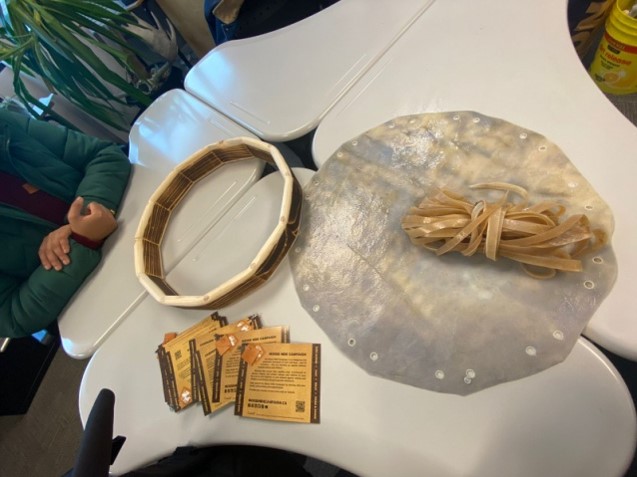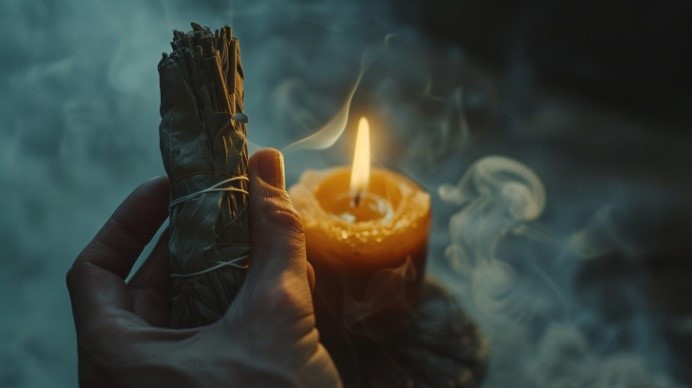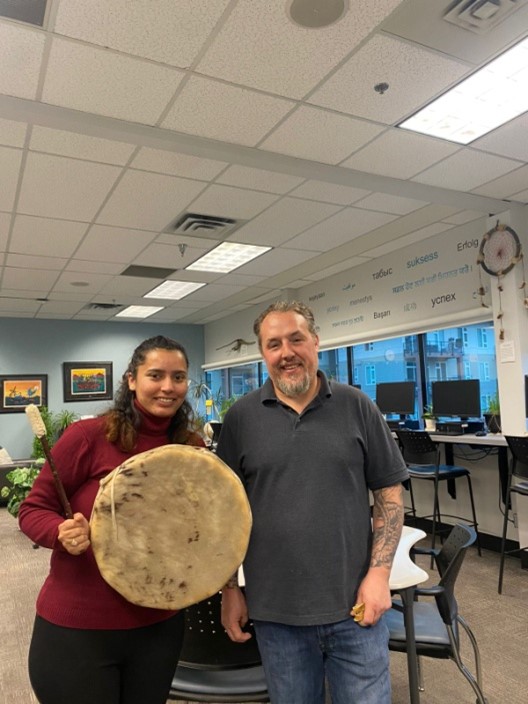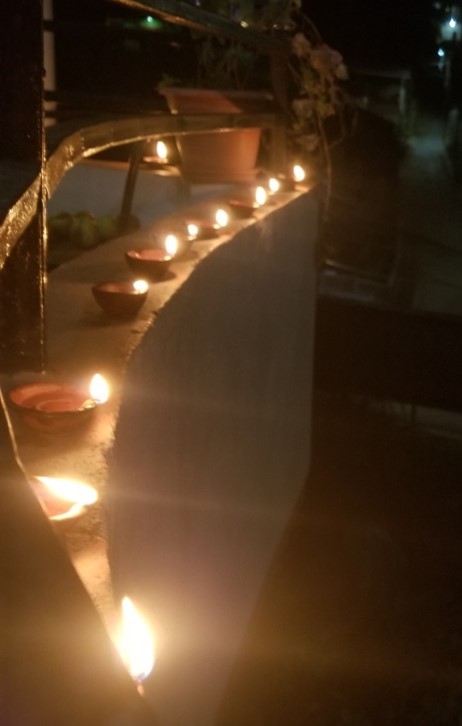
Whenever I travel somewhere, I look for the similarities between the place and my home. It has been more than a week since I arrived in Kamloops. I was selected as a recipient of the Global Affairs Study in Canada scholarship program for 2023/2024. I am now a research student under Dr. Bala Nikku’s supervision at Thompson Rivers University (TRU) because of this I am getting the privilege and opportunity to be engaged in various sessions, workshops, training, and discussions to learn, relearn, and unlearn things.
Recently, I had the honor to participate in the drum-making session at TRU organized by Dian Henderson and facilitated by Quanah George. The session started with a smudging ceremony which is a traditional ceremony performed by Tk`emlúps te Secwepemc member and knowledge keeper to cleanse the soul or aura of negative thoughts of a person or a place. The ceremony started by burning incense made out of herbs. At first, we cleanse our hands as if we were washing our hands but with the smoke then our eyes, mouths, ears, heads, and bodies.

While doing the ceremony it made me realize that the smudging ceremony is similar to doing Aarati in Hindu and Buddhist culture in Nepal. While Aarati can be done by burning the incense (Dhupa) and lamps (Diyo). Dhupa is made out of herbs same as incense for smudging ceremony. Whereas Diyo is made out of clay or metal that holds cotton wick dipped in oil or ghee. Dhupa represents the purification or cleansing of the environment by dispelling negative energies, an offering to ancestors, and a symbol of spirituality and cultural tradition. However, Diyo is offered by lightening the cotton wick by wavering it in a circular motion by reciting certain prayers or mantras. It is a symbol of devotion and gratitude to the divine power. At the end of performing the ceremony of Aarati, we cleanse our hands, face, and head from the Diyo after offering to god as a prasad. This tradition has been an integral part of our rituals and ceremonies for centuries that had been passed down by our ancestors.
Meanwhile, rawhide from deer, elk, buffalo, or steer is used to make a drum that is called Powwow in the native language of Canada. Each group was instructed to follow and by the end of the session, Powwow was ready for each individual. Amongst the Native people, Powwow has its significance as being a part of spiritual healing ceremonies and celebrating indigenous music, art, and food.
The tradition of Powwow has brought the community together by celebrating the various aspects of indigenous spirituality, and identity. It has enhanced the power of strengthening the indigenous group as an individual and as a community.
Likewise In Nepal, Tamang is a large number of indigenous people recognized by the Government of Nepal who use Damphu similar to Powwow as an instrument made up of goat skin. The essence of Damphu is proportionally related to the culture passed down traditionally by the ancestors. It represents the importance of communal gathering that enhances social cohesion, preservation of culture, and spiritual connections. It encompasses the rituals seeking the blessings for prosperity and health of tribal communities accompanied by traditional arts, the transmission of cultural knowledge, and the showcasing of the rich heritage.
Therefore, the similarities between the cultures of indigenous communities in Canada and Nepal have helped to understand the connection between culture, tradition, and spirituality. It shows that despite the differences in origin, geography, and beliefs. Through compare and contrast it signifies that the ideology and philosophy of collectivism can be observed through the similarities between various indigenous communities globally. The philosophy and values of collectivism can be reflected within indigenous groups while engaging with various aspects of life such as community decision-making, educating, and preserving culture. I am fortunate enough to experience and learn the concept of collectivism among the Indigenous community in Canada through this session.

About the author
Namuna is a Generic Social Worker professional from Nepal. She received Canada’s Global Skills Award fellowship and is currently visiting Thompson Rivers University and working with Dr. Bala Nikku at Education and Social Work on a Disaster Resilient Futures Project



Anonymous
Liked it